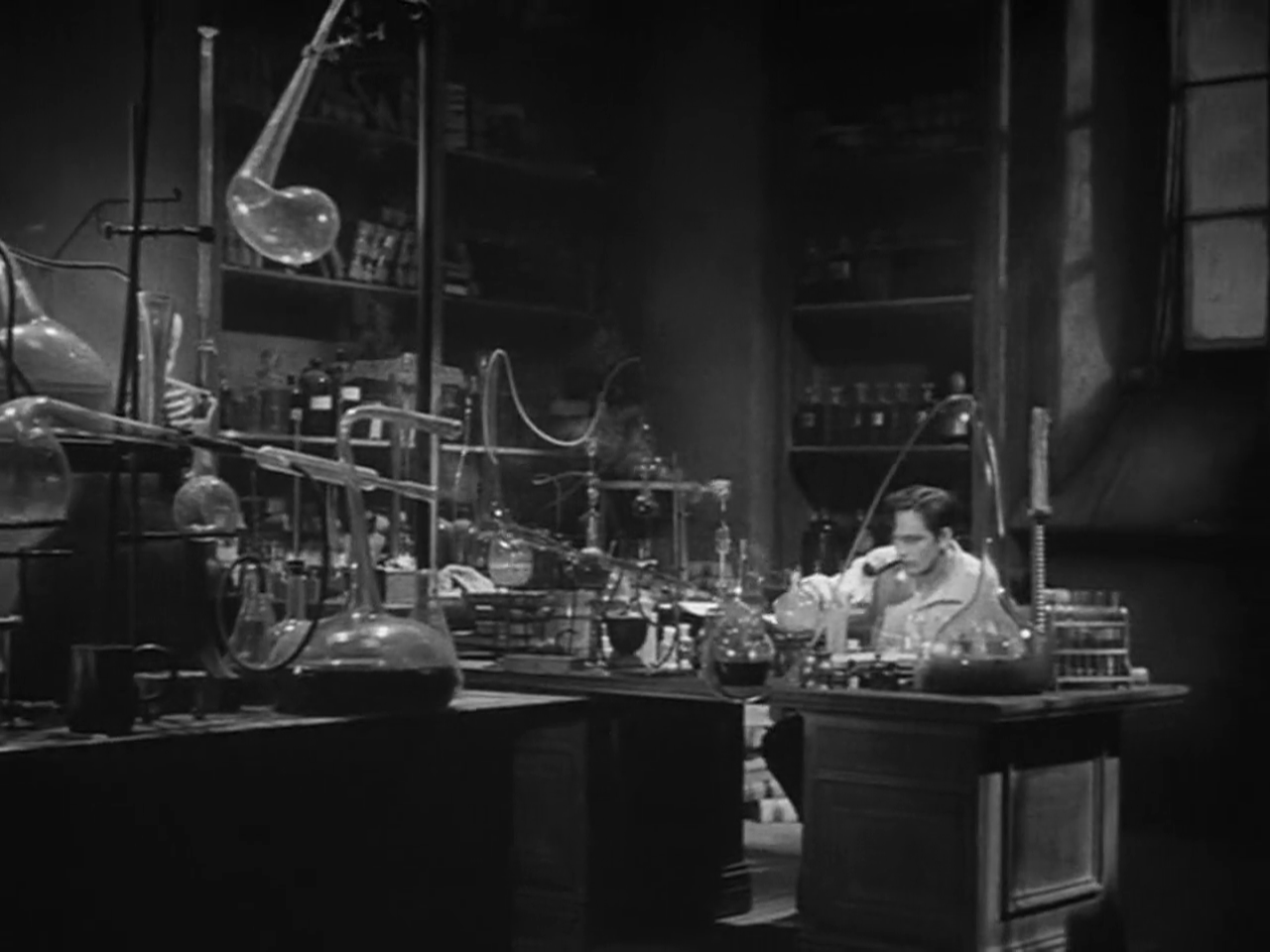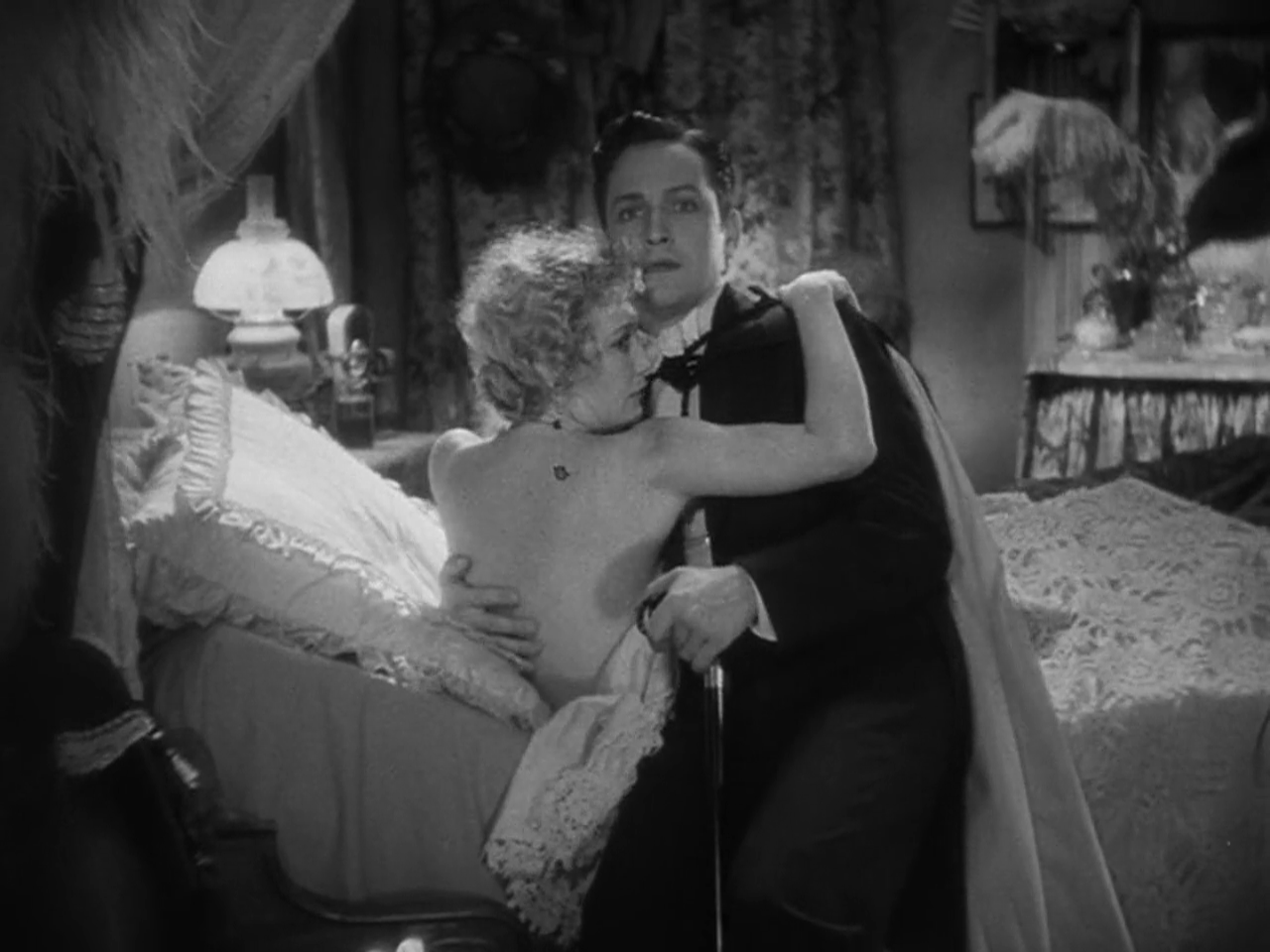In the early days of cinema studios quickly realized that the public's fascination with horror and adapting classic works of literature to the screen was almost a surefire recipe for box office success, Universal had amazing results with their adaptations of Bram Stoker’s Dracula, so in 1931 Paramount Pictures released a picture that was even more horrify and sexually charged than what Bela Lugosi’s vampire could have ever dreamt of.
Based on the 1886 gothic novella "The Strange Case of Dr. Jekyll and Mr. Hyde" by Scottish author Robert Louis Stevenson, who is best known for"Treasure Island" his 1883 adventure novel, Paramount Pictures would release their cinematic adaptation of his tale of mad science and sex at the tail end of 1931 and not only would it shock the world and shake up the genre it would also be the first horror movie to ever win an Academy Award. Set in Victorian London, the story follows the brilliant Dr. Henry Jekyll (Fredric March), a respected scientist who is certain that within each man lurks impulses for both good and evil and he becomes consumed by the desire to separate the good and evil within himself, but the potion he concocts to unleash his inner demons ultimately transforms him into the sinister and cruel Mr. Hyde.
“I’m not a mad scientist, just an extremely horny one.”
While this film has several elements from Robert Louis Stevenson’s novella it is narratively quite different, the novella takes place over several years and has absolutely no love story, which is central to this 1933 production, while in this movie, Henry Jekyll is madly in love with his fiancée Muriel Carew (Rose Hobart) and wants to marry her without delay, unfortunately, her father, Brigadier General Sir Danvers Carew (Halliwell Hobbes), wants them to wait seven months before tying the knot. This does not sit well with Jekyll and when the Brigadier takes Muriel on an extended trip to Bath, Jekyll begins to experiment with his drug which he believes will unleash his evil side and leave him a calm and righteous man, needless to say, things do not quite go as planned and the result is a transformation into Edward Hyde, an impulsive, sadistic, violent, amoral man who indulges his every desire.
The ultimate alter-ego in action.
Another key addition to the story is that of Ivy Pierson (Miriam Hopkins), a prostitute that Jekyll had defended from one of her "clients" but when Hyde enters the picture this degenerate brute seeks her out and becomes her “Sugar Daddy” and sets her up at a boarding house where he could then rape and psychologically manipulate her at his leisure, whipping and beating her out of sheer sadistic pleasure. Hyde’s declaration of love via violence is summed up best in his line “Forgive me, my dear. You see, I hurt you because I love you. I want you! What I want, I get!” and this is what makes Edward Hyde one of the most horrific villains to ever grace the silver screen. As much as Jekylly is portrayed as an almost saintly figure, forgoing social obligations with the rich to help the sick, even making a little girl walk again, it's the idea that something like Hyde could lurk inside any of us that is the real terror of this tale.
Hyde and Ivey, the original toxic relationship.
Stray Observations:
• While the characters of Muriel Carew and her father do not appear in Robert Louis Stevenson's original story they are actually based on similar characters created by playwright T.R. Sullivan for his 1887 stage adaptation of the story.
• This is the only version of Robert Louis Stevenson’s tale where Jekyll's name is pronounced correctly as "Jee-kall" and while accurate it is rather distracting at times to the modern ear.
• The first four minutes are point-of-view shots through the eyes of Dr. Jekyll, with the character's face seen only when he peers into a reflecting surface, and this POV technique would later become a horror trope.
• Actor Edgar Norton plays Jekyll’s butler Poole, an occupation he will return to in the Universal classic Son of Frankenstein as Basil Rathbone’s butler.
• In the 1931 Frankenstein, art director Charles D. Hall and electrician Kenneth Strickfaden created the ultimate gothic laboratory, but in this film, the lab constructed by art director Hans Dreier became the gold standard for mad scientist laboratories to come.
I assume the number of beakers you own dictates how great at science you are.
Rouben Mamoulian's Dr. Jekyll and Mr. Hyde could only exist in pre-code Hollywood, with 8-minutes removed when the film was released again in 1936, and it’s this sexually charged energy that makes this film work so well, with Hyde boasting to Ivy that his sexual prowess compensates for his lack of physical beauty - which clearly tips the balance for her - and Hyde's emotional and physical abuse of Ivy would never have been so graphic post-Code, nor would her own sadomasochistic fascination with it. Of course, the key element of the story and impetus for Jekyll's experimentation comes from the sexual frustration that stems from his perpetually postponed wedding and that kind of thinking was looked down upon by the censors.
Who knew that "blue balls" could be so dangerous?
One of the film's greatest achievements lies in its visual representation of the psychological battle between Jekyll and Hyde. Through clever camera techniques and makeup effects, the transformation sequences are executed with impressive artistry for the time. The scenes where Jekyll struggles with his inner demons, torn between his altruistic intentions and the allure of his wicked alter ego, are particularly effective and chilling. Of course, all of this artistry is elevated by Fredric March's portrayal of both Jekyll and Hyde which is nothing short of astonishing. His ability to switch seamlessly between the two characters, capturing their contrasting personalities and physicality is a testament to his acting prowess. Now, as Oscar-worthy as March’s performance is I would be remiss if I didn’t point out how truly amazing Miriam Hopkins was as the doomed prostitute Ivy Pearson, the terror and anguish in her eyes builds and builds until the final crescendo that ends her poor life at the hands of a true monster. It is a truly heart-wrenching performance.
Note: The transformation sequence is not only brilliant but Wally Westmore’s makeup effects change over the course of the film becoming progressively more monstrous.
The work of cinematographer Karl Strus plays a crucial role in enhancing the film's overall atmosphere as the use of shadow and light creates an eerie ambiance, emphasizing the sinister nature of Hyde's deeds and with director Rouben Mamoulian's visual style effectively captures the Victorian era with its gloomy streets, fog-filled alleyways and eerie interiors. The use of innovative camera techniques, such as the subjective point of view shots, enhanced the sense of unease and suspense, allowing the audience to experience the turmoil of Jekyll's internal struggle firsthand. Furthermore, the musical score, composed by the talented Herman Hand adds an extra layer of unease and foreboding to the narrative. The haunting melodies heighten the film's emotional impact, elevating the sense of dread and moral conflict experienced by the characters.
Did the wicked queen from Snow White mix that particular potion?
Although released in 1931, Dr. Jekyll and Mr. Hyde still holds up remarkably well today and serves as a testament to the enduring power of Stevenson's original story, showcasing the timeless themes of duality, the struggle between good and evil, and the consequences of tampering with one's own nature. While some aspects of the film may appear dated to modern audiences, the strength of the performances and the exploration of human nature remain captivating to this day. The character of Jekyll’s best friend Dr. John Lanyon (Holmes Herbert) works as a template for those trying to save a friend from addiction and as substance abuse was a central theme in the novella, Lanyon’s character here is well-placed, but it should be noted that he dies of fright in the original novella while in this film he is crucial to Hyde and Jekyll’s downfall.
With a friend like Jekyll who needs enemies.
There have been countless versions of Stevenson's classic tale but this adaptation still remains the best, its engaging and atmospheric adaptation presented a gripping exploration of the human psyche. Fredric March's outstanding performance, combined with Rouben Mamoulian's deft direction, as well as the film's technical achievements, solidifies its status as a classic in the horror genre. Whether you are a fan of classic cinema or a lover of psychological dramas, this film is a must-watch for its historical significance and enduring themes.










No comments:
Post a Comment